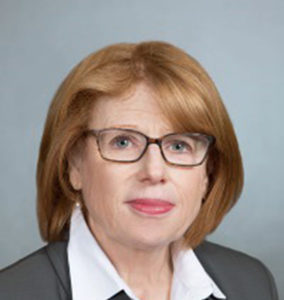 Progressive Voice is a weekly opinion column. The views and opinions expressed in the column are those of the individual authors and do not necessarily reflect the views of their organizations or ARLnow.com.
Progressive Voice is a weekly opinion column. The views and opinions expressed in the column are those of the individual authors and do not necessarily reflect the views of their organizations or ARLnow.com.
By Lucy Theilheimer
When I moved in to my Arlington colonial 26 years ago, my neighbors ranged from young families to older residents, some of whom had been in their homes for over 40 years. Over time, I observed the changes that redefined their later lives, like the widow who had to move into assisted living. Having spent my career in the field of aging, health and long-term care, I was acutely aware of how supportive communities might make the difference in helping my neighbors to live their later years with health, dignity and independence.
No senior should have to live without the essential ingredients of a quality life–social relationships, housing, family support and sufficient income. Yet many do right here in our own community.
Can communities like Arlington be more purposeful and innovative in recognizing the need and helping to fill it?
Research has shown that 80% of the factors affecting someone’s overall health and well-being have nothing to do with the care one receives in a doctor’s office or in a hospital. It is those social determinants of health, such as housing and social networks, that are essential to quality of life.
Over time, social networks shrink. And it has become increasingly clear that social isolation is detrimental to one’s health–as risky as smoking 15 cigarettes a day, according to one study. Older people with fewer social connections often suffer from higher levels of stress and depression. Men without a spouse or cohabiting partner are more likely to suffer from loneliness than their unmarried counterparts. Age-related changes, such as decline in visual, sensory or cognitive abilities, all can impact social interaction. So can loss of mobility and limited transportation. Retirement can result in a change in income, as well as a loss of social interaction and professional identity.
In Arlington, 14 percent of all households have one or more members who are 65+ and 47 percent of older households are single member households, one of the key risk factors associated with social isolation. Of those, 25 percent are widows and another 25 percent are either divorced or single. Most are women (67.5 percent) and 10 percent have significant limitations with activities of daily living.
What I saw happening in my neighborhood with older people is happening across the U.S. Every day, 10,000 individuals are turning 65. While many are in good health today, over time they likely will be coping with an increasing number of chronic conditions, and experiencing difficulty in carrying out daily tasks like grocery shopping or bathing. They will lose lifelong friends and loved ones. And many will not have support systems to remain safely in their homes and communities.
Those most at-risk are the homebound, who can’t leave their homes to join in the opportunities in the community. Often, a Meals on Wheels delivery person is their only human contact. Community organizations like senior centers and religious groups do offer opportunities to bring people together. But the need is outpacing the response.
Today research is identifying and testing other kinds of interventions that can help to reduce social isolation. One example is using technology to facilitate connections between homebound seniors and their local senior centers — a senior center without walls. Another is expanding “friendly visitor” programs where trained volunteers are matched with an isolated senior to make regular visits and build a relationship that is meaningful to both. Unfortunately, even if we prove that these interventions work and are cost effective, who will pay to scale them?
Thinking about my neighbors, I am remembering one who lost her husband to cancer. She was able to remain in her home for a number of years until she started experiencing falls. With no family close by, she ultimately moved to an assisted living community.
Another neighbor lost his wife of more than 50 years. Thanks to an extensive family support system and some modifications to his house, he stayed in his home until the age of 94 and died with his family all around him.
I imagine that most of us would prefer this last scenario for ourselves. Can the Arlington that is home to entrepreneurs, innovation incubators and deep-pocket capital investors also be home to innovation projects that tackle problems like social isolation among older people?
Lucy Theilheimer is a long-time resident of Arlington and was an active participant in the Leadership Arlington program. She is Chief Strategy and Impact Officer for Meals on Wheels America.

